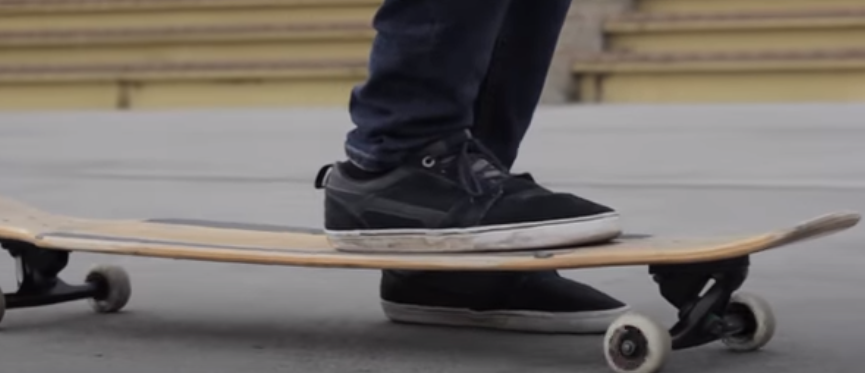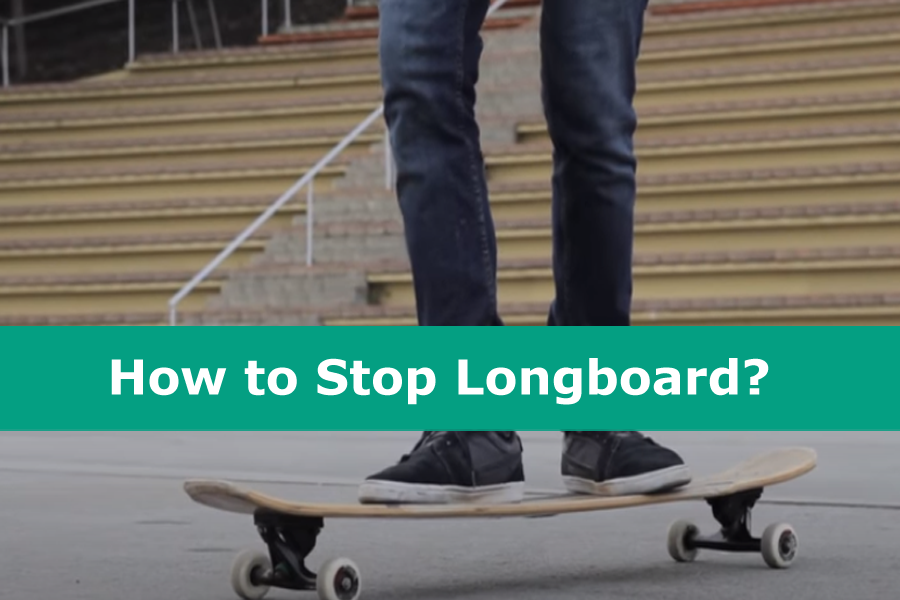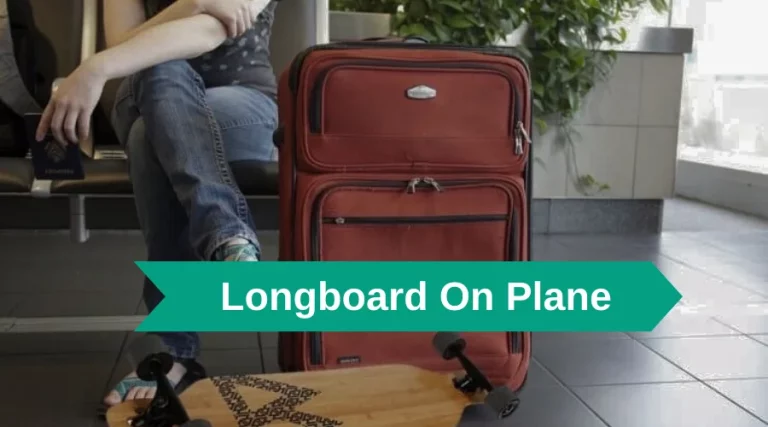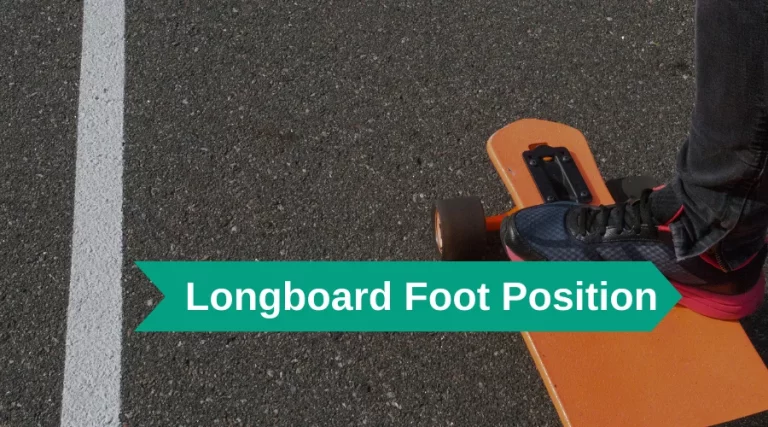How to Stop Longboard? Easy Guide
Learning how to stop your longboard is a crucial skill for every rider. Whether you’re a beginner or an experienced rider, being able to stop your board safely and efficiently is essential.
Stopping your longboard is an important skill for every rider to learn. Here are some common techniques:
- Foot brake: Dragging your back foot on the ground to slow down.
- Slide stop: Shifting your weight and initiating a controlled slide to come to a stop.
- Classic stop: Stepping off your board and pressing down on the tail to stop.
Remember to practice in a safe environment and wear protective gear.

Rolling onto rough surfaces to stop your longboard
Rolling onto rough surfaces can be an effective way to stop your longboard. It involves using friction to gradually slow down, rather than coming to a sudden stop.
This method is especially useful if you’re cruising on a flat surface at a low speed. Another way to stop your longboard is by using the foot brake, which is ideal for any speed.
For those looking to stop on rough surfaces like grass or gravel, the key is to maintain a straight line to prevent accidents. Other techniques include learning how to run it out or bail, using your feet to create friction against the surface, or breaking with your foot while driving by shifting weight to the front foot.
Proper practice and technique are essential to mastering how to stop on a longboard safely and efficiently. So grab your longboard and start practicing!
Using the foot brake for easy stopping at any speed

Using the foot brake is a crucial technique that longboarders must master to stop at any speed. It involves sliding one foot off the board and scraping the sole of the shoe along the ground to create friction and slow the board down.
This technique is particularly useful when cruising at a comfortable speed and wanting to stop in a controlled manner. However, it requires practice to find the right balance between applying enough pressure to stop the board and avoiding a sudden jerk that might throw the rider off course.
Stopping on a longboard using rough surfaces like grass and gravel
Stopping on a longboard can sometimes be tricky, but fortunately, there are a number of methods to do it safely and effectively. One such method is to use rough surfaces like grass and gravel to create friction and slow down your board.
By rolling onto these surfaces, you can easily bring your ride to a stop without risking injury or damaging your board.
Another important way to stop on a longboard is to use your foot brake, which can give you more control over your speed and help you slow down quickly, regardless of how fast you are going. Additionally, learning to slide and bail when feeling too fast, as well as mastering other techniques like the air brake or Coleman’s slide, can all help you stop your longboard safely and efficiently.
Learning to run it out or bail when feeling too fast
As a Beginner, it’s crucial to feel comfortable on a longboard, and part of that involves having a reliable stopping technique.
One of the easiest ways to stop on a longboard is to run it out or “bail”. This method is especially useful if you feel like you’re going too fast. Find a great hill with a long, flat outrun, or an uphill at the end, so you can go as fast as you’d like. But if you get that feeling of fear or discomfort, it’s time to get off the board and run it out.
Doing so will help you feel safe and confident while riding your longboard. Remember, it’s always better to bail or run it out than to risk a potentially harmful fall. So take the time to practice, and you’ll see a significant improvement in your stopping skills!
Using your feet to create friction against the surface
One of the most important techniques for stopping your longboard is creating friction with your feet. By lowering your opposite foot to the ground while balancing your front foot for kick pushing, you can slow down or come to a complete stop.
This method is especially effective if you’re skating on a smooth surface and need to stop quickly. However, it’s important to note that this technique can wear down the soles of your shoes, so be sure to have a designated pair for longboarding.
Using your feet to create friction is just one of many stopping techniques you can use to stay safe while cruising on your board.
Breaking with your foot while driving by shifting weight to the front foot

If you want to stop while driving on a longboard, then breaking with your foot while shifting weight to your front foot is a great technique to learn. It is important to first learn how to balance on one leg, which is usually your front leg, by shifting your weight onto it and bending your knee. Then, gradually shift all of your weight over your front foot as you apply pressure on your heel to create friction and slow the board down.
Before trying this technique, practice simpler foot breaking techniques to build up your confidence and balance. You can also use rough surfaces like grass, gravel or even the air brake technique by pushing the tail of the board down. When practicing, keep in mind to maintain your center of balance and keep your knees bent.
Another important tip is to find a medium to large-sized hill to practice your stopping techniques as it will help you to develop your skills faster.
Practicing sliding with Coleman’s slide or standup slide
After mastering the basics of foot braking and using rough surfaces to stop, it’s time to level up your stopping game with sliding techniques.
The Coleman slide and standup slide are great skills to learn for slowing down your longboard, especially for downhill rides. The Coleman slide is a great starting point for beginners as it involves placing one hand on the ground while sliding the board out to the side.
Standup slides, on the other hand, require more balance and skill as the rider stays upright while sliding the board sideways. It’s important to practice these slides on a flat surface before attempting them on a hill. With enough practice, you’ll be able to stop your longboard safely and efficiently while adding some style to your rides.
Using the air brake technique by pushing the tail of the board down
Another braking technique for longboarders is the air brake technique. To perform this, riders push the tail of the board down, which helps reduce speed.
This method is especially useful when moving at higher speeds. Additionally, by using the tail of the board or the heel of the back foot, longboarders can increase friction and drag, which helps slow down the board.
Finding a medium to large-sized hill to practice stopping techniques
After learning various stopping techniques, it’s important to apply them on a medium to a large-sized hill to fully master stopping on a longboard. This offers a more realistic and challenging environment, improving your reflexes and coordination while learning to control your speed safely.
With carves that span the width of the hill and a smooth “s” shape, carving can help control your speed while also serving as an effective stopping technique. Don’t underestimate the value of a well-controlled steady stop when traveling downhill.
Tips for mastering how to stop on a longboard safely and efficiently
To master the art of stopping on a longboard safely and efficiently, a rider should follow these tips.
- Practice regularly and take the time to familiarize oneself with each stopping method.
- Learn to anticipate obstacles and adjust one’s speed accordingly.
- Always wear appropriate safety gear such as a helmet, gloves, and knee pads.
- Master the foot brake technique, which can be executed at any speed.
- Use rough surfaces like grass and gravel for easy stopping.
- Use the air brake technique by pushing the tail of the board down.
- Practice sliding using techniques like Coleman’s slide or standup slide.
- Find a medium to large hill to practice stopping at different speeds.
- Learn to bail or run it out safely when feeling too fast.
- Lastly, always be aware of one’s surroundings and ride defensively to avoid potential collisions.

I am a longboarding enthusiast and a blogger. On this blog, I share tips, tricks, and advice based on my experience. I am dedicated to helping newbies improve their skills and enjoy this fun activity to the fullest.
Disclosure:This post may contain affiliate links. If you click on a link and make a purchase, we may earn a commission at no additional cost to you. Learn more.







